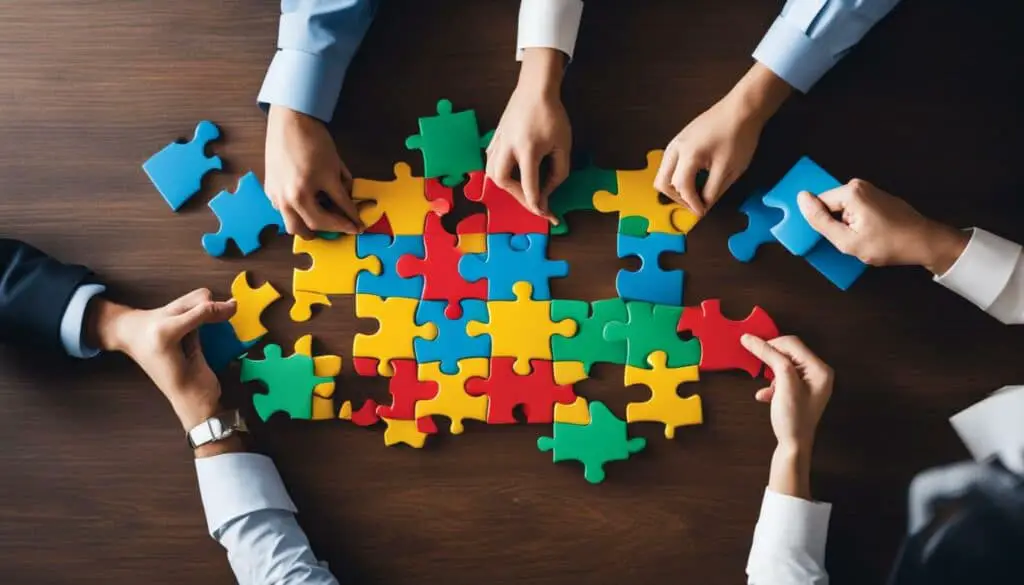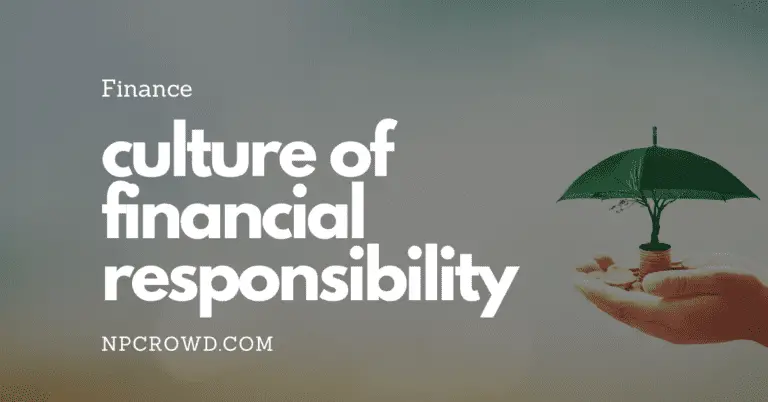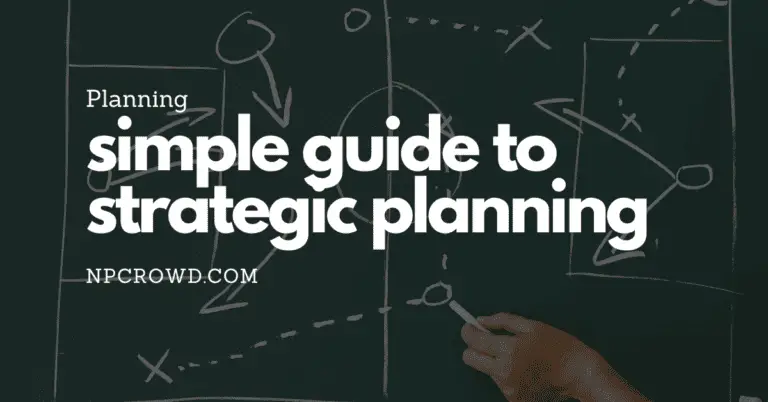Maximizing Impact: Our Nonprofit EOS Journey
Disclaimer: This post may contain affiliate links. These links, if used and purchases made, we may earn a small commission. These affiliate programs do not impact the recommendations we make or the resources we refer you to. Our focus is on providing you the best resources for your nonprofit journey.
Our collaborative journey uncovered a stark truth: governments cannot solely bear the burden of job creation, particularly in emerging markets. It was a realization that transformed our approach and led us to harness the power of entrepreneurship within the nonprofit sector. With an eye towards innovation and economic stimulation, our entrepreneurial endeavors played a pivotal role in generating opportunities and fostering growth.We embarked on this path decades ago, creating an NGO in Argentina that has since stood as a testament to entrepreneurship’s transformative power. Even so, our impact magnified when we embraced the Entrepreneurial Operating System (EOS), a framework designed for efficiency and alignment of both vision and effort. Central to this system, the role of the Integrator became our lynchpin, synchronizing our goals and actions for greater cohesion and impact.
Through employing effective nonprofit strategies and continuous nonprofit impact measurement, we were poised to further our objectives. Our experience is a living case study that demonstrates the potential of nonprofit EOS to create self-reinforcing cycles of innovation and job creation within the communities we serve.
Key Takeaways
- Understanding the critical role of entrepreneurship in job creation within emerging markets.
- Recognizing the value of implementing EOS in nonprofit organizations for enhanced impact.
- Integrating the role of the Integrator for efficient goal alignment and organizational synergy.
- Appreciating the Entrepreneurial Operating System as a catalyst for innovative and effective nonprofit strategies.
- Emphasizing the importance of measuring nonprofit impact for continual improvement and accountability.
- Highlighting the significance of a structured approach to spearheading growth and opportunities in the nonprofit sector.
Embracing EOS: A Gamechanger for Nonprofit Management
Innovative approaches to nonprofit management have always been the cornerstone of our development. However, it was the Entrepreneurial Operating System (EOS) that catalyzed a seismic shift in our organizational structure and efficacy. This transformative strategy didn’t just refine our operations; it revolutionized them.
The Catalyst for Our Transformation
Nonprofit organizations, by their nature, aspire to achieve monumental goals—often without the vast resources available to for-profit entities. The introduction of EOS to our management fabric ushered in a new era of effectiveness. Rather than grappling with scattered efforts and unclear directives, EOS provided us with the clarity and focus needed to advance our ambitious mission.

Aligning Vision and Mission Through EOS
One of the most significant strides we took was aligning our vision and mission with the practical framework of EOS. This alignment didn’t happen in isolation—it was the result of a concerted, collaborative effort across all levels of nonprofit leadership. Effective nonprofit strategies fused with EOS principles meant our teams could operate under a shared leadership model, driving profound enhancements in our governance and amplifying the impact we could make in communities we serve.
| EOS Components | Nonprofit Applications | Impact on Management |
|---|---|---|
| Vision | Establishes clear organizational objectives | Unified direction and purpose |
| People | Ensures the right people in the right seats | Increased operational effectiveness |
| Data | Drives decision-making with metrics | Objective assessment and strategy adjustment |
| Issues | Systematic approach to problem-solving | Efficient resolution, minimized disruption |
| Process | Standardizes procedures to ensure consistency | Streamlined workflow, increased accountability |
| Traction | Translates vision into actionable steps | Consistent progress tracking and goal attainment |
By weaving together various business elements into a coherent operational fabric, we not only lifted our organizations to new heights—we empowered them to reach beyond, invigorated by nonprofit leadership that’s more dynamic, disciplined, and dedicated than ever. EOS has not just been a gamechanger; it has been our launchpad for pursuing excellence in service and stewardship within the nonprofit sector.
Understanding the Role of the Integrator in Nonprofit Success
In the world of nonprofit governance and development, the Integrator emerges as a cornerstone for cultivating organizational synergy. We’ve seen firsthand how this role breathes life into effective nonprofit strategies, welding disparate ideas into a single stream of executable actions. It’s the Integrator who stands at the helm, navigating through the complexities to drive our mission forward with precision and a shared vision.

The Integrator’s prowess is seen in their exemplary nonprofit leadership, fostering an environment where innovation isn’t just encouraged, it’s expected. These leaders possess a unique skill set—a blend of strategic thinking and decision-making efficiency that transforms lofty goals into tangible results. Their presence signals a shift from scattered initiatives to concerted efforts that elevate our organization’s influence and extend our reach.
In every successful nonprofit that employs the EOS, there lies a steadfast Integrator, stitching together the broad visions into achievable outcomes.
An Integrator’s work within our organization is multi-faceted. They serve as a conduit for entrepreneurial spirit, channeling collective energies toward sustainable growth. Balancing the scales of management and creativity, they enable our entrepreneurs to immerse themselves in what they do best: envisioning a better future.
Embodying shared leadership, the Integrator maintains unity and ensures that strategic moves reflect our shared values and goals. With their guidance, we’ve managed to transcend the ordinary, transforming our aspirations into palpable achievements that signify progress for ourselves and the communities we serve.
- A master in synchronizing complex organizational tasks.
- A figure of solidarity, linking each team member to the overarching goals.
- The architect behind our successful application of EOS principles.
Indeed, the Integrator is the linchpin of our success. It is through their adept navigation within our structured ecosystem that we’ve been able to expand our endeavors and solidify our role as catalysts for social change.
| Nonprofit Element | Integrator Role | Outcome |
|---|---|---|
| Visionary Planning | Conduit for Ideas | Goals Materialized |
| Team Dynamics | Unity Advocate | Cohesive Progress |
| Operational Oversight | Efficiency Expert | Streamlined Execution |
| Strategic Execution | Results Orchestrator | Enhanced Impact |
As we continue to advocate for effective nonprofit strategies, championing the integration of the EOS within our operations, we owe a debt of gratitude to the Integrator, whose unparalleled ability to unite our team under a common banner of progress has been nothing short of transformative. They are the unsung heroes in our journey toward nonprofit excellence.
The Entrepreneurial Spirit in Nonprofits
At the core of nonprofit sustainability and development is an often-overlooked dynamo: the entrepreneurial spirit. It might come as a surprise to some, but this spirit doesn’t exclusively belong to the for-profit sector; it thrives in the heart of mission-driven organizations too. With a knack for fostering innovation and ensuring growth, the entrepreneurial approach within the nonprofit world plays a critical role in building resilient and effective nonprofit strategies that stand the test of time.
Our journey in the realm of nonprofit impact measurement has revealed that when these entrepreneurial traits are applied, they lead to not just internal organizational improvements but also to tangible, positive impacts on broader socioeconomic fronts, particularly in emerging markets. It’s a narrative that unfolds in countless case studies where entrepreneurial nonprofits break new ground and redefine what it means to contribute value to society.
Fostering Innovation and Growth
Entrepreneurial spirit within nonprofits acts as a catalyst, sparking ingenuity, motivating risk-taking, and encouraging pioneering endeavors. This spirit pushes us to seek out fresh perspectives and innovative solutions to the complex challenges faced by those we aim to serve. It drives us to pursue effective nonprofit strategies that encompass smart resource allocation, strategic planning, and the fostering of growth-minded cultures, all while maintaining steadfast dedication to our core mission and values.
Case Studies of Entrepreneurial Impact
Drawing from real-world examples like the LID Group, and its subsidiary AI startups such as Molito.ai and CloudShore, we witness the ripple effect of entrepreneurial efforts. Their endeavors demonstrate the remarkable potential for scalability and impact within the nonprofit sector. By assessing and employing nonprofit impact measurement tools, these organizations ensure that they are not just moving forward, but they are also doing so in a way that creates verifiable, positive change.
Adopting EOS has transformed individual ventures into a synergized collective, exponentially expanding our capability for socioeconomic development. The malleability and robustness of EOS allow us to craft an interconnected ecosystem where each initiative complements and enhances the others. This synergy is fundamental to our overarching goal of advancing the communities that rely on our commitment to innovation and thoughtful impact.
Indeed, the integration of EOS principles has augmented our ability to deliver on our promises, ensuring that our entrepreneurial spirit not only thrives but also translates into a measurable, notable difference in the landscapes we touch.
| Organization | Entrepreneurial Strategy | Measured Impact |
|---|---|---|
| LID Group | AI-driven innovation | Advancement in Hyper-Automation, Education in AI |
| Molito.ai | Development of disruptive technologies | Improvement in process efficiencies across sectors |
| CloudShore | Resource network growth | Job creation and skill development in emerging markets |
Our commitment to these principles of innovation, measured success, and sustainable growth through entrepreneurial practices will continue to guide us as we aim to redefine what is possible in the nonprofit realm.
Enhancing Nonprofit Leadership with EOS Principles
The Entrepreneurial Operating System (EOS) brings a transformative approach to nonprofit leadership. Its integration into our nonprofit management practices has honed the sharpness of our organizational vision. The journey we embarked on with EOS tools, particularly the implementation of Traction and the establishment of Level 10 Meetings, has revolutionized the way we cultivate leadership skills and pursue effective nonprofit strategies.
Building a Cohesive Leadership Team
The cornerstone of this EOS-driven transformation has been the deliberate effort to build cohesive leadership teams within our organization. Focused on the clear articulation of our goals, this heightened sense of unity has allowed us to forge a leadership that is well-aligned and in constant communion with the organization’s core objectives. The result? A nonprofit leadership model that serves as a beacon of accountability and effectiveness.

Leadership Lessons from the Trenches
In our own experiences — from the frontlines of nonprofit management to the strategic planning rooms — the lessons have been myriad and enlightening. Our story is one of transformation, a testament to the power of EOS in shaping leaders who not only envision success but also drive the entire team towards it on a daily basis. With EOS, our nonprofit strategies aren’t just concepts on paper; they’re actions that define who we are and the impact we strive to make daily.
- We’ve seen the impressive alignment of individual passions with organizational mission.
- Leaders have cultivated an environment where accountability is as natural as breathing.
- The key to achieving and exceeding our organizational goals was, indeed, our commitment to the EOS process.
By embedding EOS principles into the fabric of our nonprofit leadership, we have found a new rhythm — one marked by synchronicity, agility, and a drive that continually propels us toward making meaningful strides in all our endeavors. It’s clear that our decision to implement EOS was not just about bettering our operations, but about redefining the very essence of leadership in the nonprofit sector.
Nonprofit Fundraising Strategies Reinvented by EOS
As we navigate the complexities of nonprofit fundraising, we’ve been on the lookout for methodologies that could amplify our efforts. The Entrepreneurial Operating System (EOS) has proven to be a formidable ally in this quest. By assimilating EOS into our fundraising strategies, we’ve managed to redefine the approach to be more strategic and goal-oriented, qualities that are indispensable in the realm of nonprofit marketing.

EOS instills a sense of focus and discipline crucial for launching and maintaining successful fundraising campaigns. It doesn’t just set a unified direction; it molds our entire organizational mindset towards achieving well-defined financial targets. We’ve seen firsthand that EOS principles aren’t constrained by changing circumstances, as evidenced by our ability to continue fundraising effectively throughout the Covid pandemic.
Adopting EOS transforms fundraising from a sporadic activity into a core, strategic facet of our operations, aligning every team member towards our financial aspirations.
We’ve noticed that EOS has had a multifaceted impact on our ability to fundraise:
- Governance: By establishing clear governance structures within our fundraising efforts, we ensure that every campaign is driven by consistent policies and procedures.
- Alignment: Our organizational goals and the individual objectives of our fundraising teams are now in lockstep, forging a fundraising approach that resonates with our mission and resonates with our donors.
- Accountability: The EOS tools have brought an unprecedented level of accountability to our fundraising, ensuring that responsibilities are clear and outcomes are measurable.
It’s through effective nonprofit strategies empowered by EOS that we’ve rejuvenated the art of fundraising. It’s not just about collecting donations; it’s about structuring our campaigns in a way that they become a powerful narrative of our mission and vision.
| Before EOS | After EOS |
|---|---|
| Disjointed efforts | Unified strategy |
| Unclear objectives | Targeted financial goals |
| Limited accountability | High accountability |
| Spontaneous approaches | Planned execution |
Moving forward, we aspire to further embed EOS within our fundraising activities, looking beyond traditional avenues of nonprofit marketing to find innovative and dynamic ways of engaging with our supporters and stakeholders. Our journey with EOS has just begun, and we’re eager to explore the new heights of fundraising success it promises to take us to.
Strengthening Nonprofit Governance through Structured EOS Techniques
As we delve into the vital topic of strengthening nonprofit governance, we’ve observed a burgeoning need for structured systems that can enhance our overall efficacy. Central to our strategic refinement has been the conscious adoption of the Entrepreneurial Operating System (EOS), a transformative framework promising to elevate our governance and operational prowess. By integrating EOS techniques, we’ve initiated a paradigm shift within our nonprofit leadership dynamism, fortifying it with clarity, coordination, and uncompromising accountability.

Defining Clear Roles and Responsibilities
In our journey toward effective nonprofit strategies, defining clear roles and responsibilities stood paramount. The EOS model serves as a compass that guides us through this meticulous definition. By assigning specific duties and establishing well-defined lines of accountability, EOS empowers each member of our team to contribute to their fullest potential. This level of granularity in role clarity ensures that no task goes overlooked and every action aligns with our mission.
Ensuring Accountability and Transparency
A critical objective for us has been bolstering accountability and upholding the highest standards of transparency within our operations. Through EOS, we foster an environment where regular check-ins and transparent communication are the norms, not exceptions. The adoption of clear, measurable objectives and the introduction of the Integrator role has been critical in upholding these standards, ensuring every team member is not only aware of their responsibilities but also fully committed to delivering results.
| EOS Technique | Governance Impact | Outcome for Nonprofit |
|---|---|---|
| Role Definition | Clarifies team member duties | High-performing teams aligned with mission |
| Accountability Chart | Defines who is accountable for what | Transparency in task ownership and outcomes |
| Regular Pulse Meetings | Encourages ongoing communication | Reinforced collective focus and swift issue resolution |
| Scorecards | Tracks critical metrics | Objective measurement of progress and performance |
| Integrator Role | Unifies teams under shared vision | Organizational synergy, leading to strategic advancements |
In summary, aspiring toward effective nonprofit strategies calls for governance that is not only resilient but intuitive and adaptable. The strategic integration of EOS within our nonprofit echelons is not a mere investment in methods; it is a dedication to a culture that prizes strategic foresight, iterative improvement, and a steadfast commitment to making a measurable difference.
Creating a Culture of Accountability Within Nonprofits
At the heart of lasting nonprofit impact measurement lies not just in setting objectives but instilling a culture that fosters accountability across all levels. As we lean into this vision with the Entrepreneurial Operating System (EOS), we aim to embed discipline and precision into our daily operations, allowing us to consistently meet our nonprofit governance and management goals.
Instilling Discipline Across All Levels
Discipline is the backbone of high-performing teams, and within our nonprofit setting, this truth holds no less significance. By incorporating structured EOS techniques, we invite all our team members to embrace a commitment to rigor and consistency. This approach focuses on the behavior and habits that must be lived out each day to fulfill the greater mission; it is about making every day count through methodical, deliberate actions.
Implementing discipline across our nonprofit management has led to an operational cadence where everyone understands the part they play in our ecosystem. Whether it’s adhering to strict reporting guidelines, following through on action items post-meetings, or maintaining high standards of service, the presence of discipline ensures that the entire organization moves in one accord towards the designated impact targets.
Executing the Vision: A Day-to-day Approach
Translating our lofty mission into tangible, day-to-day progress is no small feat, yet it’s exactly what EOS equips us to do. Layer by layer, our daily execution of tasks builds towards achieving our grand vision. Utilizing tools like the Level 10 Meeting and scorecards, we make sure that each member not only understands the ‘why’ behind their work but also sees how their contributions directly influence our overall nonprofit impact measurement.
Whether in program delivery, donor engagement, or community relations, the precision of our day-to-day execution under EOS infuses clarity and momentum into our strategy. This clarity translates into deliberate progress and measured impact, which in turn builds the trust and credibility vital to our existence and effectiveness as a nonprofit organization.
By nurturing a culture of accountability, we ensure that our organization doesn’t merely respond to changes but proactively steps into each new challenge with a clear, united front. It’s this sort of organizational maturity that leads to sustainable growth and a lasting impact—one that we not only can measure but also can take pride in as a testament to our hard work and dedication to our cause.
Nonprofit Sustainability and Growth with EOS Tools
The journey to nonprofit sustainability and meaningful growth is punctuated by the adoption of effective nonprofit strategies, undergirded by proven systems like the Entrepreneurial Operating System (EOS). In our quest for impact and endurance, we’ve embraced EOS tools to set achievable objectives—a practice that has redefined how we structure our operations and measure our progress.
Setting Realistic Goals and Attaining Them
In our experience, attaining long-term sustainability hinges on our ability to set realistic targets and chart a path to achieve them. The EOS framework anchors us in this pursuit, ensuring that every goal aligns with our mission and taps into our full potential. It infuses our daily tasks with purpose, turning strategic plans into actions that drive us continually forward. We’ve learned that when goals are clear and connected to our vision, our collective efforts resonate more deeply, leading to significant strides in our development and service delivery.
Measuring and Celebrating Success
Assessing the fruits of our labor is key to preserving the efficacy of the programs we hold dear. Nonprofit impact measurement is an inherent aspect of EOS—it encourages us to pause and evaluate both the tangible and intangible effects of our work. This process is more than a mere assessment; it is a celebration of our successes and an honest reflection on areas needing improvement. By embracing a culture of transparency and self-evaluation, we’ve cultivated a more resilient organization that not only meets the challenges of today but also anticipates and adapts to those of tomorrow. Success stories, like those experienced by ONQ and American Family Urgent Care, serve as beacons, illuminating the effectiveness of EOS in fostering nonprofit growth and sustainability.
FAQ
What is Nonprofit EOS and how does it impact our organization?
Nonprofit EOS, or the Entrepreneurial Operating System, is a set of tools and processes designed to help organizations like ours maximize impact by aligning all resources and efforts towards achieving our goals. By implementing EOS, we’ve been able to improve nonprofit impact measurement and implement more effective nonprofit strategies.
How did the Entrepreneurial Operating System (EOS) transform our nonprofit management?
The adoption of EOS enabled us to embrace a game-changing approach to nonprofit management. We experienced improved clarity, alignment, and synchronization within our strategic planning, allowing us to operate with greater effectiveness and shared leadership that aligns with our mission.
What is the role of the Integrator in our nonprofit’s success?
The Integrator in EOS plays a central role in our nonprofit’s success by unifying different parts of the organization. They transform visionary ideas into structured, executable plans and maintain unity within the team, ensuring the organization works cohesively towards its objectives.
How does the entrepreneurial spirit contribute to the success of nonprofits?
The entrepreneurial spirit is crucial in driving innovation and sustainable growth within nonprofits. It encourages organizations to think creatively, take calculated risks, and continuously seek out new opportunities for expansion and social impact.
What are some case studies that exemplify the impact of entrepreneurial initiatives in nonprofits?
Case studies like LID Group demonstrate how entrepreneurial initiatives within nonprofits can have a scalable influence on the sector. These case studies show that by implementing entrepreneurial strategies and tools like EOS, nonprofits can significantly enhance their socio-economic impact.
How do EOS principles enhance nonprofit leadership?
EOS principles contribute to a strong, cohesive leadership team by providing clear direction and accountability. They help nonprofit leaders focus on the organization’s vision and ensure that day-to-day operations are in line with long-term strategic goals.
How does EOS reformulate our approach to nonprofit fundraising?
By using EOS, our nonprofit has been able to turn fundraising into a strategic and targeted effort. The structured, disciplined approach of EOS helps leaders to steer fundraising campaigns effectively towards financial goals, especially in challenging times.
In what ways does structured EOS techniques strengthen nonprofit governance?
Structured EOS techniques bolster nonprofit governance by defining clear roles, responsibilities, and establishing an agile yet principled framework. This enhances our ability to maintain accountability and transparency throughout the organization.
How does EOS help in creating a culture of accountability within nonprofits?
EOS fosters a culture of accountability by institutionalizing discipline at all levels, ensuring that our day-to-day actions are aligned with our overarching vision. This consistent execution is crucial for moving our nonprofit forward and achieving our goals.
How do we ensure nonprofit sustainability and growth using EOS tools?
EOS tools help us in setting realistic goals and formulating actionable plans to reach them. They also assist in measuring success through comprehensive assessment methods that offer insights into both quantitative outcomes and qualitative progress, ensuring that we grow and evolve sustainably.







